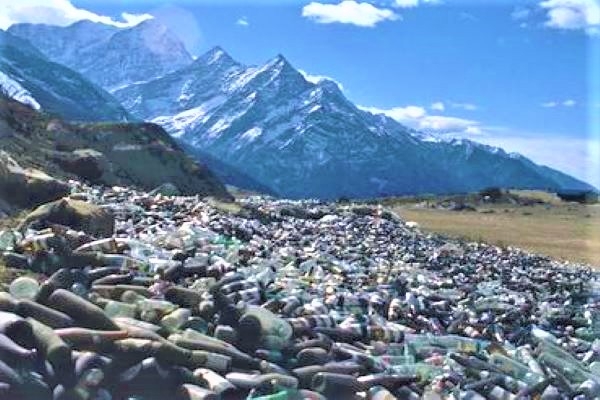
18-May-2025 12:00 PM
Plastic Waste in the Himalayas: A Growing Environmental Crisis
Overview
The pristine Himalayan ecosystem, often romanticized for its breathtaking beauty and spiritual sanctity, is facing a quiet but escalating crisis: plastic pollution. According to the 2024 report by The Himalayan Cleanup (THC) campaign, over 84% of the plastic waste collected across nine Himalayan states is contributing to severe environmental, health, and systemic problems.
Scale and Nature of the Problem
In total, more than 1.2 lakh pieces of waste were audited, and 88% of it was plastic. The most common type? Food and beverage packaging, which accounted for 84.2% of plastic waste, with 71% of this being non-recyclable. That means most of it is designed for single use and will persist in the environment for decades.
The regions contributing the most to plastic waste were:
Sikkim and Darjeeling (West Bengal)
Ladakh
Nagaland
Uttarakhand
Environmental and Social Impacts
1. Tourism Pressure
Tourist hotspots, riverbanks, and protected forest areas had the worst plastic accumulation. This points to how unregulated tourism, coupled with inadequate infrastructure, is overwhelming these fragile ecosystems.
2. Biodiversity and Climate Risks
Plastic pollution seeps into soil and water, affecting crops, livestock, and wildlife. Microplastics can enter food chains and even impact climate patterns by disturbing water cycles and heat absorption in glacial regions.
3. Human Health Hazards
In villages and towns, open burning of plastic waste is common, leading to air pollution and respiratory diseases. Dumping near water sources also leads to water contamination and the spread of vector-borne diseases.
Challenges in Waste Management
Lack of Infrastructure
Mountainous terrain complicates things. Many regions lack basic facilities for waste collection, segregation, or treatment. Waste often travels downhill, polluting rivers and valleys below.
Policy Gaps
Several Himalayan states have banned certain plastic products, but implementation is inconsistent. Vendors and tourists still rely heavily on plastics due to lack of alternatives and poor enforcement.
Low Awareness and EPR Gaps
There’s a gap in understanding among producers about Extended Producer Responsibility (EPR). Meanwhile, tourists often lack awareness about sustainable practices, further adding to the crisis.
Difficult Terrain
With scattered settlements, steep slopes, and harsh winters, logistics of transporting and managing waste remain a persistent challenge.
Steps Taken by India
Extended Producer Responsibility (EPR): Holds producers accountable for managing the plastic waste they generate.
Plastic Waste Management Rules, 2022: Bans thin plastic bags under 120 microns.
Swachh Bharat Abhiyan: A national campaign encouraging cleanliness, including plastic waste removal.
Plastic Parks: Specialized zones created for recycling and processing plastic waste.
Way Forward
1. Mountain-Sensitive Policies
Policies must account for remoteness, local cultures, and ecological fragility.
2. Decentralized Solutions
Community-led waste management rooted in traditional practices can offer sustainable alternatives.
3. Responsible Tourism
Mandatory waste audits at tourist sites, especially near rivers and pilgrimage spots, can help mitigate the damage.
MCQs with Answers
1. What percentage of the plastic waste in the Himalayas comes from food and beverage packaging?
A. 40%
B. 60%
C. 84.2%
D. 90%
Answer: C. 84.2%
2. Which Himalayan regions contributed the most plastic waste, as per the 2024 audit?
A. Ladakh and Manipur
B. Sikkim and Darjeeling
C. Arunachal Pradesh and Kashmir
D. Assam and Meghalaya
Answer: B. Sikkim and Darjeeling
3. What is a major health hazard of plastic waste in human settlements?
A. Increase in literacy rates
B. Reduction in biodiversity
C. Vector-borne diseases and respiratory problems
D. Improved air quality
Answer: C. Vector-borne diseases and respiratory problems
4. What does the Plastic Waste Management Rules, 2022 prohibit?
A. Use of compostable plastics
B. Manufacture of plastic containers
C. Use of plastic bags thinner than 120 microns
D. Sale of packaged drinking water
Answer: C. Use of plastic bags thinner than 120 microns
5. What is a recommended approach to managing plastic in Himalayan regions?
A. Centralized waste dumps
B. Complete ban on all plastics
C. Decentralized, community-based waste systems
D. Use of plastic incinerators everywhere
Answer: C. Decentralized, community-based waste systems